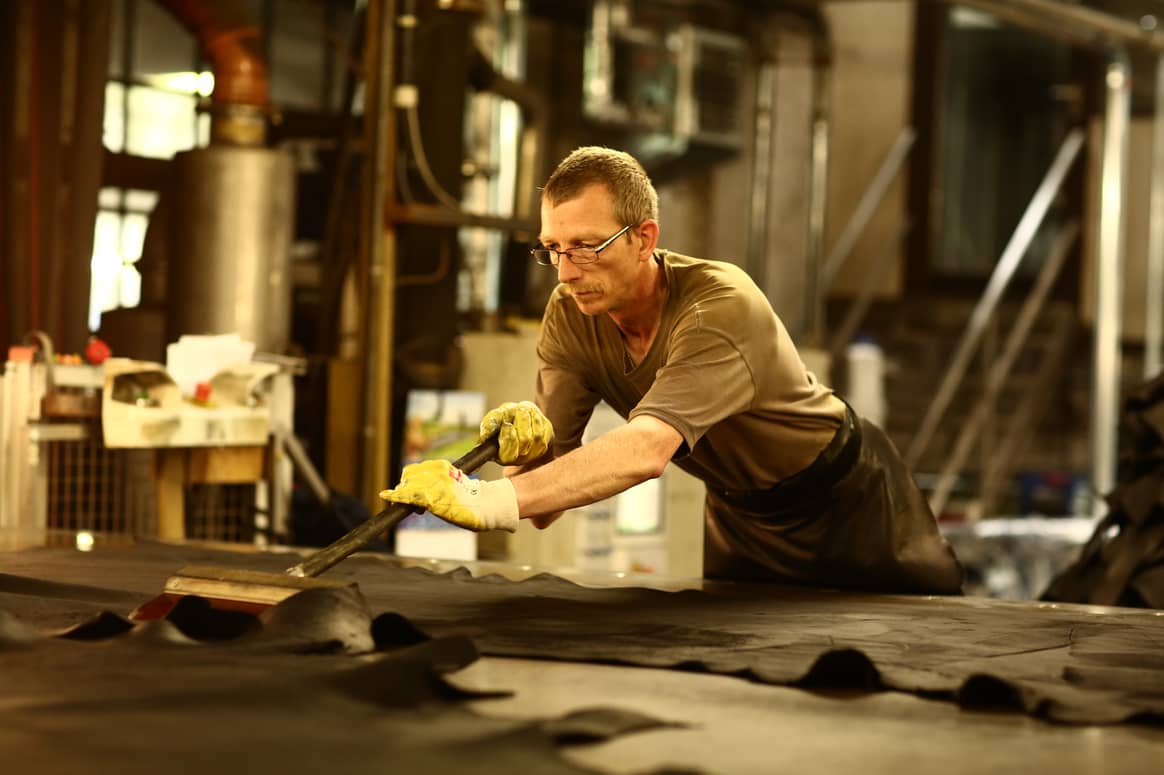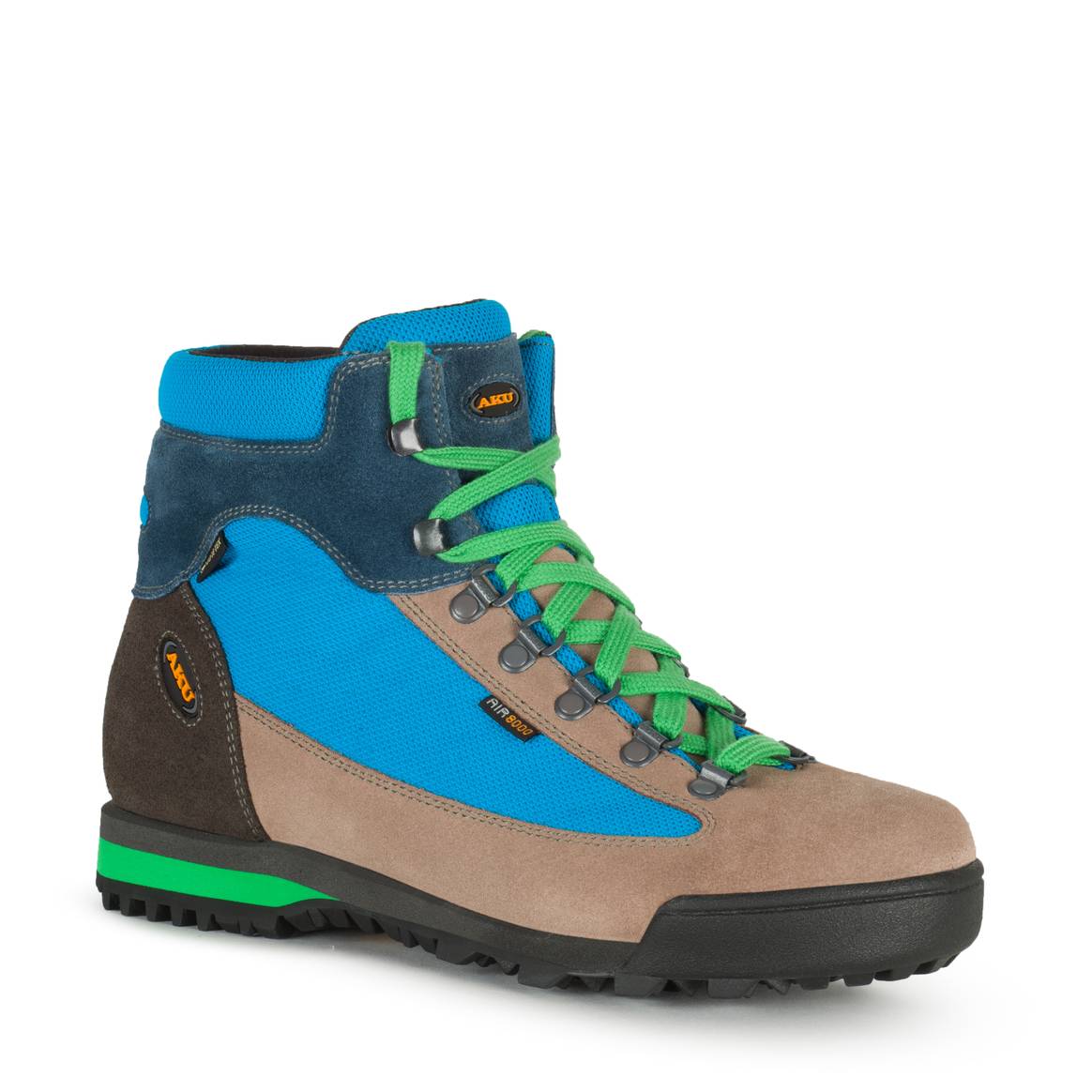Engaged in the clothing industry for 20 years.

Leather as upcycled waste: A discussion about leather and sustainability
In many towns, there is still a tanner’s street, a tanner’s path or a tanner’s alley. But the tanning trade itself has long disappeared from most cities. And with it a lot of knowledge and understanding about how leather is made. But this knowledge would be important to better understand the image problem that leather and leather shoes have been struggling with for years, and to conduct a balanced sustainability debate.
Manfred Kaußen comes from the chemical industry and worked for many years in the global leather industry. Today, he advises companies and leads seminars on leather, including at the German research and testing facility, Hohenstein Institute. FashionUnited spoke to the expert with years of experience in the industry and asked about the reasons behind the ongoing criticism of leather, what measures the industry is taking and what direction the industry might be going in.
Image problem number 1: Chrome and non-transparent supply chains
The image problem of leather in recent years has one specific cause: chrome (VI). Time and again, leather products attracted negative attention in product tests by consumer magazines or test institutes because they were found to contain elevated levels of chromium (VI), which is harmful to health. Residues of chromium (VI) were for instance found in (children’s) shoes, gloves, purses, jewellery and belts. Since 2015, leather products that come into contact with the skin can no longer be marketed in the EU if their chromium (VI) content exceeds a certain limit. For children’s shoes, there have been regulations in some countries including Germany for some time.
So for lawmakers, chromium(VI) is no longer an issue. “The problem of chromium (VI) has actually been solved in Europe,” confirmed Manfred Kaußen. This is mainly due to the sustainability initiative of the German footwear industry, Cads e.V., which together with the Leather Working Group (LWG) wrote a guide on avoiding chromium (VI) which is now used worldwide.
Even so, apparently, it is still not that easy to reliably eliminate it from production. “The problem is that chromium(VI) can form from the harmless chromium(III) if the tanning processes are not completely under control,” Kaußen further explained. The fact that not all tanneries seem to be so precise “is again related to the fact that most tanneries have moved to low-wage countries and leather today is characterised by a globally dispersed, small-scale supply chain with artisanal structures.”

Image problem number 2: Leather comes from dead animals
While some people love leather as a natural material, others detest it precisely because of its “natural” origin: leather is the preserved skin of slaughtered animals, and more and more people are distancing themselves from it. The number of vegans is rising worldwide. Correspondingly, interest in meat and thus in leather products is decreasing, as leather is inextricably linked to meat consumption. “No large animal is slaughtered just for its skin,” said Kaußen. “Skins are just a waste product of meat producers and represent only 1 percent of meat sales. That is no incentive to keep animals.” This, of course, does not apply to animals that are bred for their fur.
The global trend, however, is very different from that in Europe or the US, where veganism is increasing everywhere, while meat consumption worldwide is increasing by about 2 percent a year. This leads to an increasing number of animals slaughtered, and therefore automatically more available hides. “If these were not processed into leather, they would be thrown away,” noted Kaußen, “that would be totally nonsensical”. In fact, this is also the result of a study by the animal protection organisation WWF, published in 2022. According to this study, the global growth in demand for beef is now much greater than the demand for leather. “When leather products are not made from hides produced by the cattle and dairy industry, the hides are usually processed into gelatine or sent to landfills, in the latter case releasing methane,” the study says. In the US, an estimated 17 percent of hides are thrown away.
Kaußen is therefore critical of the many alternatives to leather that have come onto the market with high marketing budgets in recent years. They neither solve the problem of what to do with the animal skins that accumulate anyway, nor do they have better properties or a better energy balance compared to leather. Kaußen has already looked at many alternatives: “In comparative tests, none of the leather alternatives exhibit the universal performance spectrum as leather itself.” And he added: “Although nobody says it, it is absolutely clear: the biggest driver for using leather alternatives is price.” Imitation leather is bought as homogeneous material per metre on a roll, while leather is only available in “skin form”, is always different and, as a natural product, is rarely flawless. Processing leather is therefore always more time-consuming than the use of synthetic artificial leather.
Chrome tanning: A success story
Annually, around 270 million cattle hides are processed into leather worldwide, of which around 85 percent are tanned via chrome (State of 2018). But why is leather actually tanned with chromium when there are harmful substances being released during this process? The reality is that chrome tanning is enjoying unprecedented success. In the leather industry, it has brought about a true revolution, said Kaußen. Chrome tanning is faster and saves material; the leather is more resistant to tearing than vegetable-tanned leather, it is softer, lighter, easier to dye and can be made water-repellent.
But above all, chrome tanning has enabled the global supply chain of leather possible. Previously, tanneries had to be located close to slaughterhouses, as fresh animal hides had to be processed quickly to avoid spoilage; long transport routes were impossible because of the lack of preservation. “Today, stocks of animal hides are not located necessarily where the tanneries are located,” Kaußen explained. “The fact that chrome tanning allows long transport routes was a key factor in its success.” ‘Wet Blue’, as the freshly tanned leather with open pores and its distinctive bluish hue is called, is transportable worldwide and can be easily stored, allowing unlimited international distribution and further processing worldwide to be possible. This has enabled Brazil to become the largest producer of beef today, with stock that has more than quadrupled since the 1960s. However, China is the largest consumer of wet blue leather.

There are alternatives, but only on a smaller scale
There are obviously alternatives to chrome tanning, but there is so far no alternative to Wet Blue. Given the current set-up of the supply chains, transport over long distances is unavoidable, and is currently only possible with Wet Blue leather.
There are also, for example, so-called “Wet White” leathers, which are based on aldehyde tanning. This process emerged in the 1980s and 1990s because the automotive industry was looking for leathers for car seats and interior upholstery that did not emit toxic substances upon disposal. This is because chromium(VI) can be created when burned. Wet White leathers are chrome-free tanned leathers, but cannot be transported as semi-finished products across the world because they would spoil. This technique is suitable for regions where the supply chain from the slaughterhouse to the tannery to the shoe manufacturer is relatively short. “Wet White is therefore mainly found within the EU, it does not allow trade,” said Kaußen.
In addition, there are also vegetable tanning agents such as oak bark, chestnut wood and many others. Many of these tanning agents were used centuries ago, and are now experiencing a resurgence in light of current sustainability efforts. Can these traditional tanning processes replace chrome tanning? Probably not. For one thing, they take much longer (up to several years) and therefore they tend to be much more expensive. Moreover, there is simply a shortage of tanning agents. “The amount of vegetable tanning needed is much higher than for chrome tanning – there are not enough tanning agents available,” Kaußen explained.
Hope for ‘Wet Green’: Tanning from olive leaves
Kaußen has therefore pinned high hopes on a new plant-based tanning agent called ‘wet green’, for which a patent was applied for about 15 years ago. This tanning agent is extracted from the leaves of olive trees, which fall from the trees naturally in autumn. The advantage: “Olive leaves are available in unlimited quantities,” explained Kaußen, “and this process enables the conventional tanning agents of the Wet Blue and Wet White processes to be completely eliminated.” These leathers are fully biodegradable and, according to Kaußen, “synonymous with sustainability and environmental friendliness in the leather sector.”
This process is no longer in the experimental phase, but is already industrially implemented and can be fully integrated into the existing infrastructure and known tanning processes. Despite these advantages, the market share of leather tanned with olive leaves still remains very small; “it just needs time to be accepted in the footwear market,” said Kaußen.

New regulations on the horizon: Bisphenols, PFAS and circular economy
In recent years, the leather chemical industry has repeatedly had to abandon chemicals it has grown fond of or has had to take responsibility for chemical residues in its products that are harmful to health. This applies, on the one hand, to chromium (VI), even if it does not enter the leather intentionally, and on the other for azo dyes, which are now also largely banned. There are also new regulations already on the horizon. Act White, for instance, has come under fire because of the bisphenols it uses.
Bisphenol A (BPA) has oestrogen-like effects and alters the hormone balance. There are currently efforts to regulate these substances more strictly under the REACH regulation. Something similar is happening with PFAS (also known as PFCs), perfluorinated and polyfluorinated chemicals used to make shoes waterproof. PFASs are suspected of causing cancer. They do not break down in the environment, so they are now found all over the world and their concentration is steadily increasing. In total, there are more than 10,000 of these PFAS compounds, about half of which the EU wants to soon ban. “At least for the footwear industry, this is something to step over,”said Kaußen. “Good alternatives have now been found.”
The biocides are also worth mentioning. These are preservatives used by the leather industry. Here, too, changes are ahead, as these substances have an effect on micro-organisms and can cause great damage in biological sewage treatment plants.
Ultimately, it is also about integrating the footwear sector more strongly into the new regulations for the circular economy. Currently, the footwear industry, for example, is still miles away from being able to recycle shoes. At least repairing them works very well.
Conclusion: Leather is upcycled waste from the meat industry
As expected, Kaußen does not think it is realistic or ecologically responsible to replace leather with alternatives. According to Kaußen, it will be decades before leather can be taken out of the laboratory without causing animal suffering. So what conclusion should we draw with regard to leather? It is clear that the amount of animal skins is directly related to our meat consumption. As long as meat is being eaten, it makes no ecological sense to demonise leather and look for – possibly petroleum-based – alternatives. If leather were invented today, it would be celebrated as a successful upcycling of waste from the food industry – the fashion world would probably be overjoyed.
But of course there are still many opportunities for improvement. Especially regarding the chemicals used for tanning, the regulation of which has been steadily tightening in recent decades. Here one would hope that environmentally and health-friendly technological alternatives would scale up faster and that consumers would be aware of this. The long transport routes, for example from Brazil to China and from China to Europe, also seem ecologically questionable, but are unfortunately common throughout the textile industry and not a unique selling point of the leather market. On the contrary, Wet White and Wet Green leather still have strong regional supply chains.
But of course there are still many opportunities for improvement. Especially regarding the chemicals used for tanning, the regulation of which has been steadily tightening in recent decades. Here one would hope that environmentally and health-friendly technological alternatives would scale up faster and that consumers would be aware of this. The long transport routes, for example from Brazil to China and from China to Europe, also seem ecologically questionable, but are unfortunately common throughout the textile industry and not a unique selling point of the leather market. On the contrary, Wet White and Wet Green leather still have strong regional supply chains.
At the same time, large-scale industrial structures – for example, in Brazil and the US, where many animals are slaughtered – have the advantage “that the tanneries there have become so large that they are run more professionally, have sewage treatment plants and pay more attention to workers’ rights,” said Kaußen. The subject of leather is complex and worth addressing.
This article previously appeared on FashionUnited DE. Translation and edit: Rachel Douglass.


